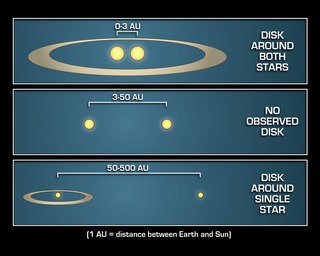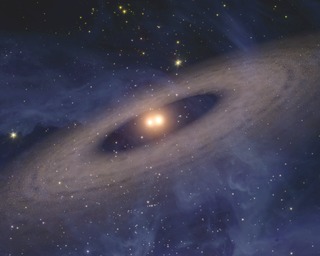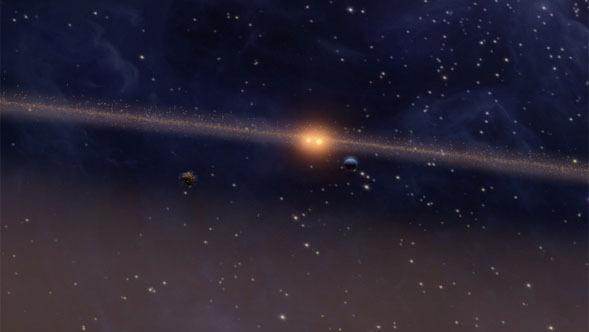
Credit: NASA/JPL-Caltech/T. Pyle (SSC)
Artwork • March 27th, 2007 • ssc2007-05a
ssc2007-05a
This diagram illustrates that mature planetary systems like our own might be more common around twin, or binary, stars that are either really close together, or really far apart.
NASA's Spitzer Space Telescope observed that debris disks, which are signposts of mature planetary systems, are more abundant around the tightest and widest of binary stars it studied. Specifically, the infrared telescope found significantly more debris disks around binary stars that are 0 to 3 astronomical units apart (top panel) and 50 to 500 astronomical units apart (bottom panel) than binary stars that are 3 to 50 astronomical units apart (middle panel). An astronomical unit is the distance between Earth and the sun.
In other words, if two stars are as far apart from each other as the sun is from Jupiter (5 astronomical units) or Pluto (40 astronomical units), they would be unlikely to host a family of planetary bodies.
The Spitzer data also revealed that debris disks circle all the way around both members of a close-knit binary (top panel), but only a single member of a wide duo (bottom panel). This could explain why the intermediately spaced binary systems (middle panel) can be inhospitable to planetary disks: they are too far apart to support one big disk around both stars, and they are too close together to have enough room for a disk around just one star.
About the Object
- Name
- Type
- Star > Grouping > Binary
- Star > Circumstellar Material > Planetary System
- Star > Circumstellar Material > Disk > Debris








